Creek Feeding Salinas De Maras Peru
There is much to do within Cusco and the Sacred Valley than just touring the well-known Wonder of the World. A tour around the Valley is necessary before leaving for the Inca citadel. There are many ruins and many wonderful things to witness in the surroundings. That is why together with Machu Travel Peru we have prepared a small article about the Maras Salt Mines. The old Salinas de Maras is a place that one cannot miss for anything in the world if you find yourself touring the Sacred Valley. These are located almost strategically on the side of a mountain, where thousands of shallow pools are filled with salt water. These pools then evaporate and leave the expected treasure crystallized.
The most important things to know about the Maras Salt Mines
- What are the Salt Ponds?
- Maras Salt mines location
- The history of the salt ponds
- How do Maras salt mines work?
- The salt mines today
- How to go there?
- The best time to go there
- Modals to enjoy Maras salt mines
- About the Peruvian pink salt
- Schedules and prices to visit
What are the salt ponds?
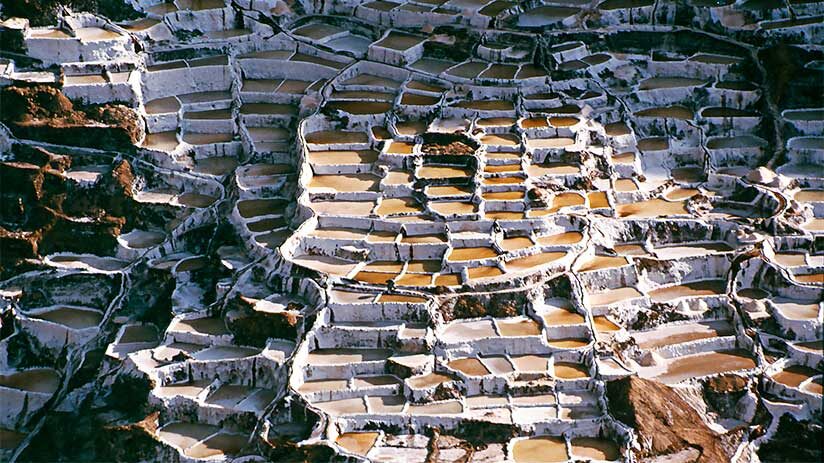
The Maras Salt Mines are more than 6,000 salts ponds carved by the Incas. These have been in operation for over 500 years in the middle of Qori Pujio mountain slopes, Sacred Valley of the Incas, (Cusco – Peru), and are still mined by local families. In the distance, these resemble a snow layer. It is an unparalleled view where the pools have various shades of white or earthy brown. The precious Peruvian pink salt is one of the treasures that ancient ancestral cultures have left us. Although the salt flats themselves were created by man, the water that is channeled into these pools comes from a natural underground spring. This underground spring is constantly and quietly carrying the water so that it fills the various ponds with the precious pink salt.
Maras salt mines location
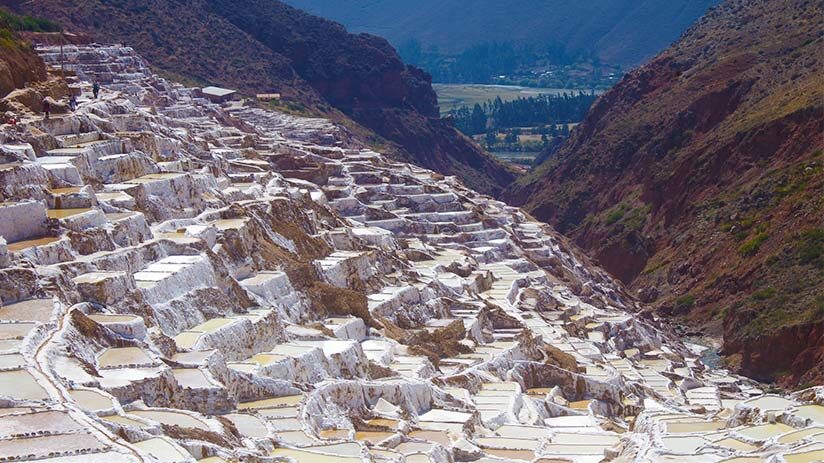
The Maras salt mines are located in the district of Maras, Urubamba province, in the Cusco department. In other words, the salt ponds are situated over the slopes of Cori Pujio mountain in Sacred Valley, over 3200 meters above sea level, from 50 kilometers northeast of the Cusco capital. These salt mines are surrounded by Chupayoq, Llully Mocco, Cruz Mocco, Qaqawiñay, and Qori Pujio mountains. Also, two local Andean communities like Maras and Pichingoto take advantage of these ponds, producing the famous pink salt.
The history of the salt ponds
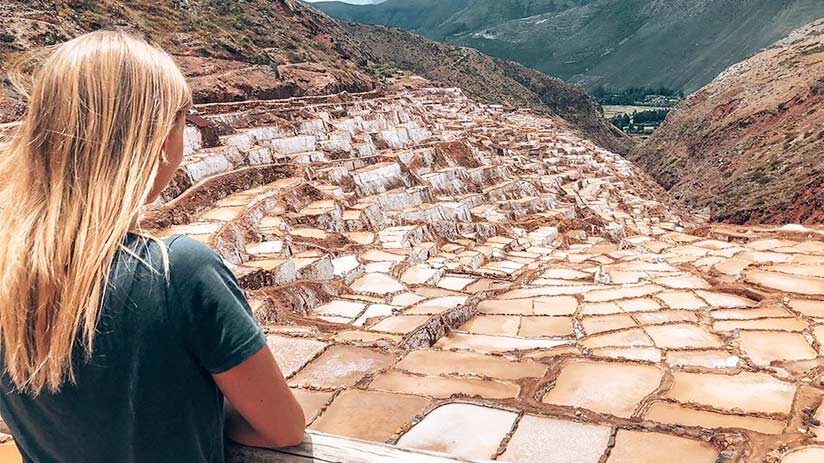
The Maras Salt Mines are believed to have been built by the Wari civilization, which predates the Inca Empire. Even so, the Incas saw the opportunity that these pools represented, thus expanding the salt flats much higher on the slopes of the mountains Qaqawiñay and Qori Pujio. In this form, the pools never stopped producing salt. Even, during the Colonial times, the descendants of the Inca Tupac Inca Yupanqui were in possession of the vast majority of the mines. Until 1969, when the Peruvian government created the public salt company (EMSAL) and began to assume the extraction, production, and administration of salt throughout the territory.
In 1977, through the "Recognition of the Peasant Community of Maras of the District of Maras" letter, the Maras and Pichingoto communities asked the Peruvian government to re-administer the Maras salt mines, reaching the objective in 1980.
Marasal S.A (Social company)
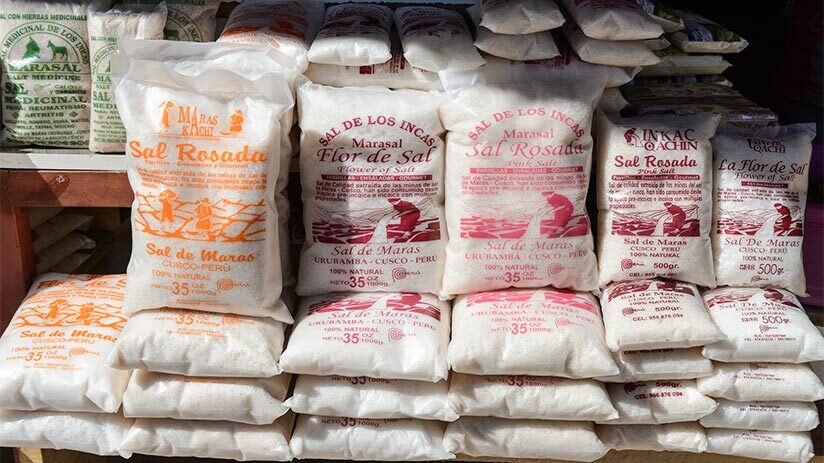
In this form, since 1980, the communities of Maras and Pichingoto founded the Marasal S.A social company, to extract, refine, value, and sell the salt produced in the pools. From this year to these days, Marasal is one of the fewer social companies with relative success in Peru. Therefore, It is not a surprise when you buy a salt bag there and see the trademark Marasal. So you already know, don't be fooled and buy the original Maras salt with the mark Marasal.
How do Maras salt mines work?
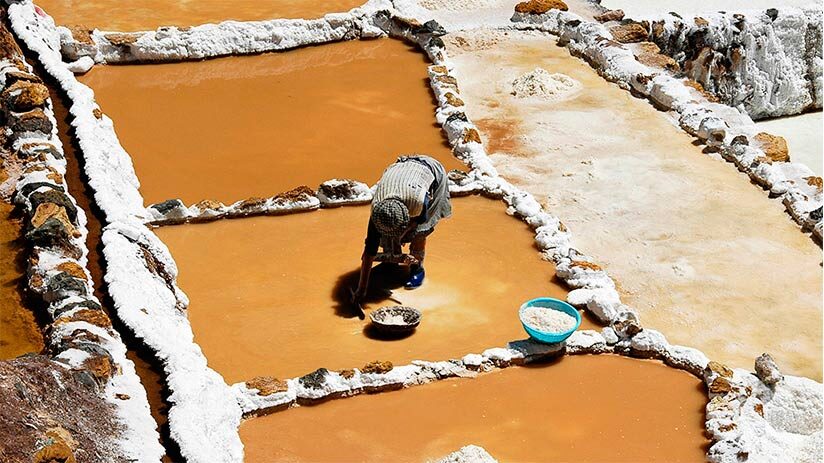
Salt is extracted through the evaporation of the brine (water with large amounts of salt that come from an underground spring in the foothills of the surrounding hills) When it evaporates, local communities workers crack the resulting layers of salt with a wooden stick. After that, the pieces of salt are crushed by their bare feet. Next, they carefully extract the salt crystals from the land surfaces. When all the salt crystals are removed, the pools are refilled again with brine and the process is repeated. This method is practiced long before the Incas themselves. With an antiquity that dates back more than 500 years.
Of course, during the Dry season, the salt mines produce more quantity of salt than during a Rainy Season. The reason? The large period of sunshine for the evaporation of brine. The salt is solidified in 3 layers, the first layer is destined for gourmet salt and grills, the second layer is used for table salt and the third is for industrial salt for fertilizers, inter alia. Therefore, if you want to know more about this ancestral technique of salt production during your Peru trip, take note of the best tours and things to do around Cusco and add the Maras Salt mines visit to your list.
The salt mines today
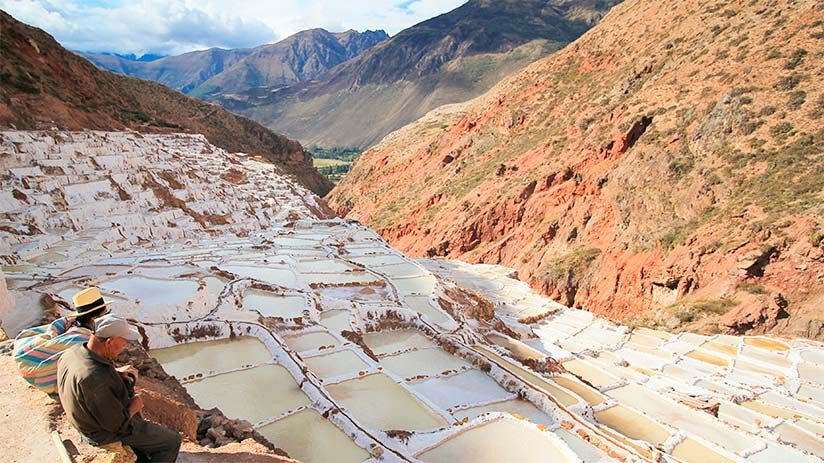
Today, the Maras Salt Mines are one of the biggest attractions to visit on any guided tour around Cusco. Being able to visit the more than 6,000 pools is one of the best things to do in Sacred Valley. As we mentioned, today the local communities (Maras and Pichicoto) have unique mining rights for the Salinas that are located close. Hundreds of local miners work at the ponds, demonstrating ancient techniques and methods used by their ancestors. Besides, the different local families deposit their daily production in the official warehouse of Marasal S.A. (The social company of Maras and Pichicoto communities) Marasal is responsible to promote, packaging, distribute and sell the salt to national and international markets and distributing the profits to the producing local families.
How to go there?
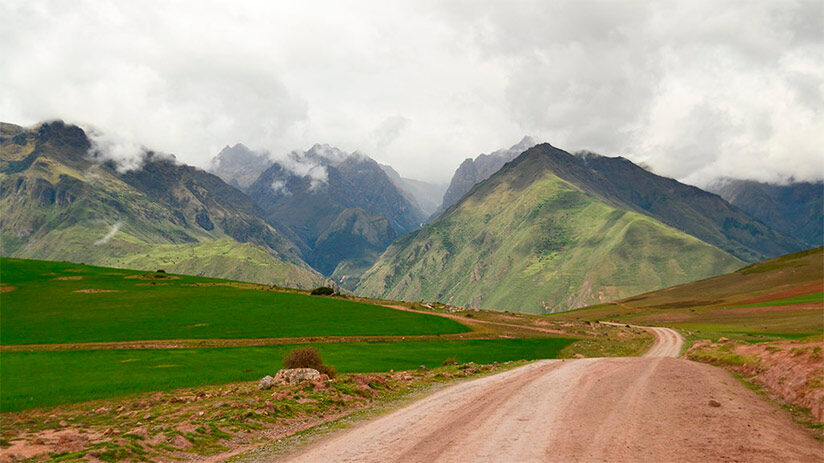
To get there, you first have to know that Maras Salt Mines are only about 45 minutes by car away from the city of Cusco. Knowing this, you have two forms of getting Maras mines:
By yourself
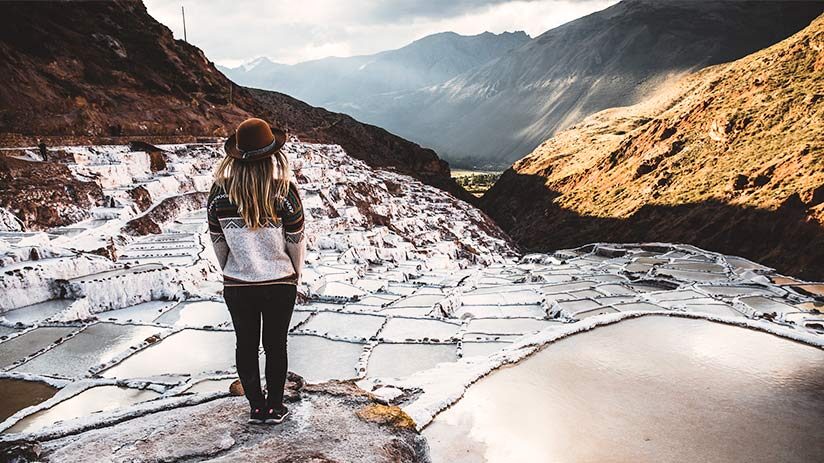
This is the independent way to do it and is used by all Maras and Pichingoto local people, daily. First, you will have to take a bus (or a taxi) that goes to Urubamba from Pavitos Street (Many transportation companies do the route Cusco – Urubamba, passing by Maras), previously clarifying to the driver that you plan to get to Maras. These minivans head to Urubamba daily and the driver will indicate to you when the minivan is close to your destiny. After you simply get off at Maras town and from there you will find taxis that will take you to the Salt mines. Or, if you prefer, you could take an hour-long hike to the mines, depart from the Main Square of Maras, and take the route north.
Or, finally, you could rent a car or a driver to take you there privately. This is a good option if you are looking to take your time and make independent stops elsewhere through the Sacred Valley map. This is the best way to make a schedule of your own stops. If you see a nice place on the way, just stop and enjoy your surroundings.
Through a tour
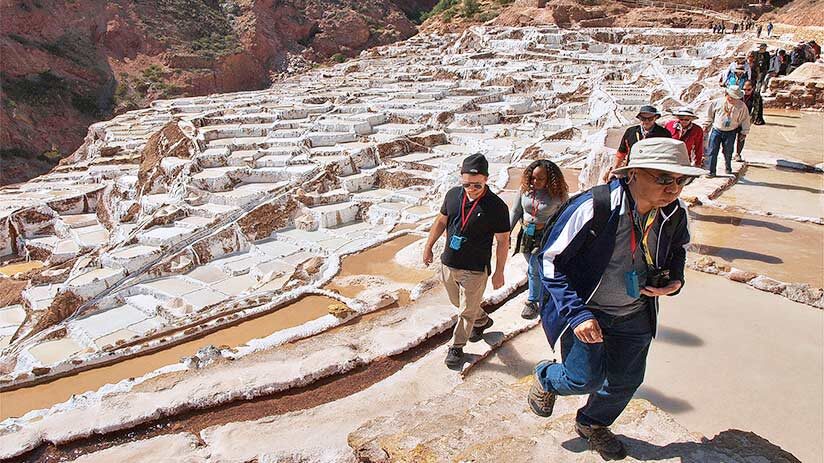
The other way to get there is by being part of a tour. This is the way most travelers choose. Usually, the Sacred Valley traditional tour of Chincheros – Maras, and Moray include its visiting. Also, some tours usually combine the Maras Salt Mines with the beautiful Moray ruins. Since the ruins are very close to Maras, they are an excellent option to enjoy a half-day tour. These tours are being offered many years ago in two models, with a group or private.
Also, in one of our many private tours, you will have the possibility of being picked up from your hotel or resort to go to Sacred Valley, enjoying the Maras salt mines, too. The tours are usually done daily and you will find good guides who can explain the history and secrets of each site very well.
The best time to go there
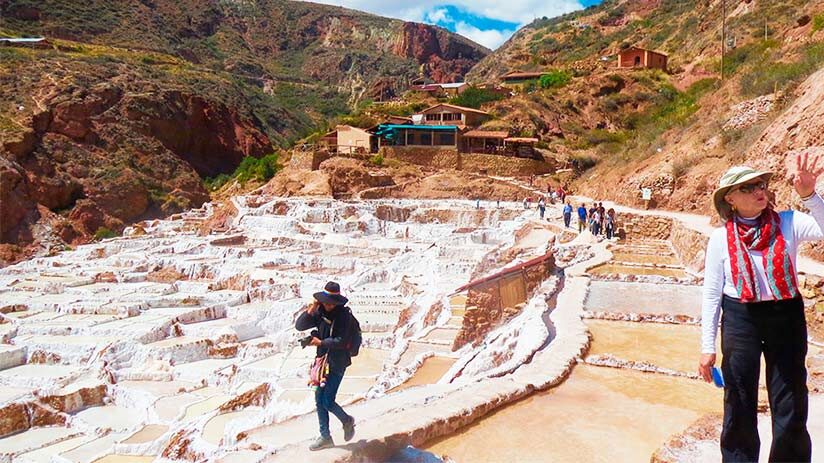
If you are planning a trip to Peru, you will surely wonder when is the best time to "have the experience" among these ancient pools.
- Well, normally, by consensus and advice of already professional travelers, it is usually recommended to travel during the dry season of Cusco (between May and October). The dry season represents a much more pleasant climate where you will enjoy clear skies and bursts of sunshine, making that water evaporates to manifest the brilliant snowy color. The dry season is also beneficial for horseback riding. In addition, you can ride ATVs or hike around the site and appreciate the views better. Conveniently, it is the same recommendation for those who wish to visit Machu Picchu.
- On the other hand, during the rainy season that occurs from December to March, the Maras Salt Mines pools turn a more brown and earthy color. To say nothing of heavy rains and thunders, which can make muddy routes and offer opaque photos of the salt pools.
Modals to enjoy Maras salt mines
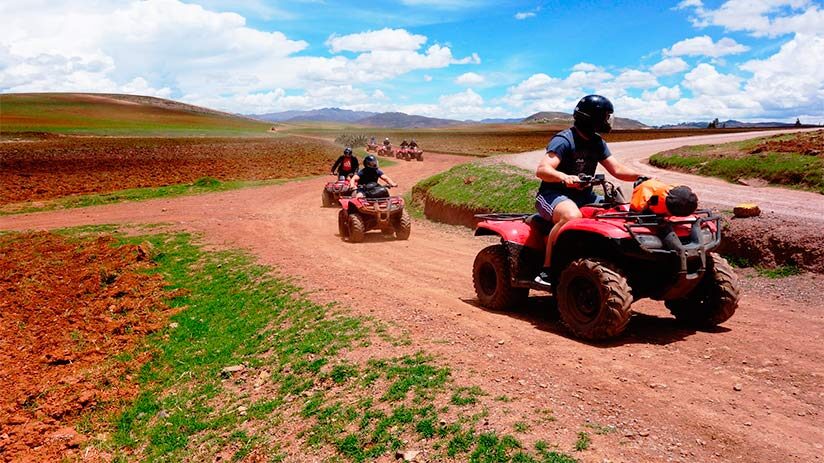
This wonderful landscape has salt flats that are still cultivated in the same way that the Incas did. As you tour the region, you will see people working and harvesting salt in small family plots. One of the best places to enjoy a photography tour in Peru. With a qualified guide, you can learn about the wonderful properties of salt and why it is one of the best in the world. The water that fills the pools is naturally infused with salt. This flows from the mountains and is deposited in these man-made pools. As the water evaporates, only the precious salt remains. And this is extracted with fairly simple tools. Stop at a store or next to one of the many traditional vendors selling the fruits of their hard work. Salt is usually sold in its pure form or mixed with herbs for cooking and bathing.
- Through private and group tours. You can find many ways to experience the beautiful Maras Salt Mines, you can choose between private and personalized tours or other group options. Your choice will depend a lot on how you want to enjoy the different attractions. Either at a much slower pace or wanting to visit several ruins on the same day. You can even make a personalized experience and include the salt mines within your Machu Picchu tours. These depart from Cusco.
- 4-wheel ATVs. Other tours offer the possibility of getting on a 4-wheel ATV (quad) and touring the Andean landscapes. You can make stops at the Maras Salt Mines and the archaeological site of Moray. This tour is usually offered in private and group options. Also, the service includes one previous hour to learn to drive the 4-wheel ATV. This tour starts from Maras town.
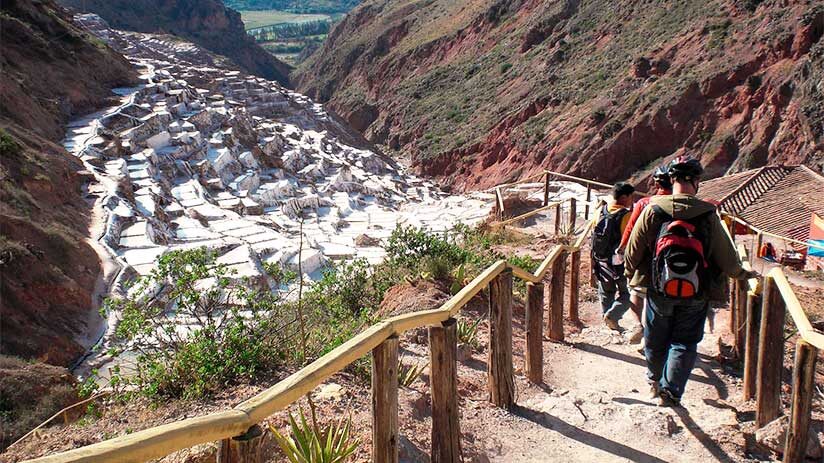
- Trekking. Although, there is also the possibility of hiking to Maras. Being able to cross the Valley on foot and contemplate its beautiful views is fantastic. A half-day hike making interesting stops at sites in the Sacred Valley like Moray and Maras Services offered in private and group modals, starting from Moray and going down to Maras. With so many ways to enjoy tourism in Peru, you won't be able to get bored.
- Horseback tours. While other tours offer the possibility of horseback riding and galloping through the landscapes of the Sacred Valley and over the route located overside of Maras salt mines. In the same way, this tour can be booked in private or group modal and includes one hour of training to ride the horse. This tour starts from Maras town.
- Biking. Or you can also take advantage of the bike tours. With so many dirt trails, it's no surprise that cycling is one of the top activities in the Sacred Valley and Maras surroundings. Therefore, you will be able to do an exciting route where you can enjoy the Maras Salt Mines and other sites of importance. Service is offered in group or private modals and it starts from Moray town, going down until Maras.
About the Peruvian pink salt
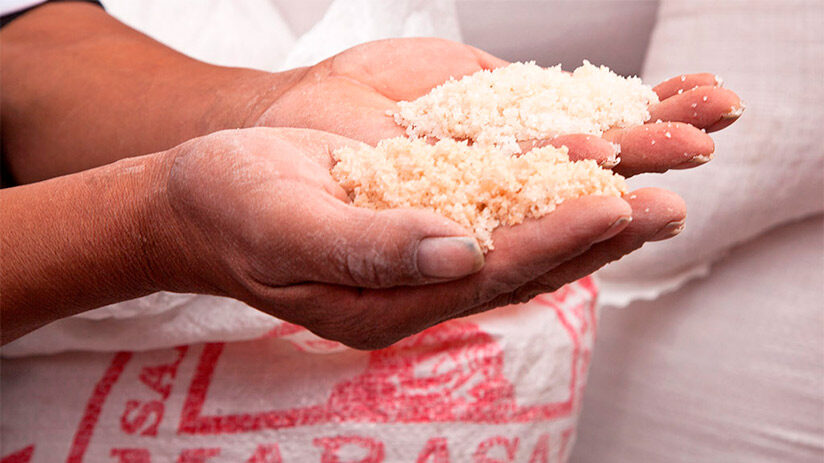
The wonderful Peruvian pink salt is harvested by hand within the ponds found in the Maras Salt Mines. Generally, the salt is harvested by local families who have the right to extract and sell the salt. This is usually sold throughout Peru in numerous local markets and other famous landmarks in Peru through the Marasal SA company. But the many visitors who pass there and enjoy the tour can buy and find Peruvian pink salt. The salt has a beautiful and characteristic pale pink color and a rough and uneven texture. It has a much smoother and more complex flavor than the usual table salt. But don't be fooled, this doesn't mean you should add more. It is the perfect complement to any culinary creation. You can use it to flavor meats, vegetables, and even potatoes!
Schedules and prices to visit
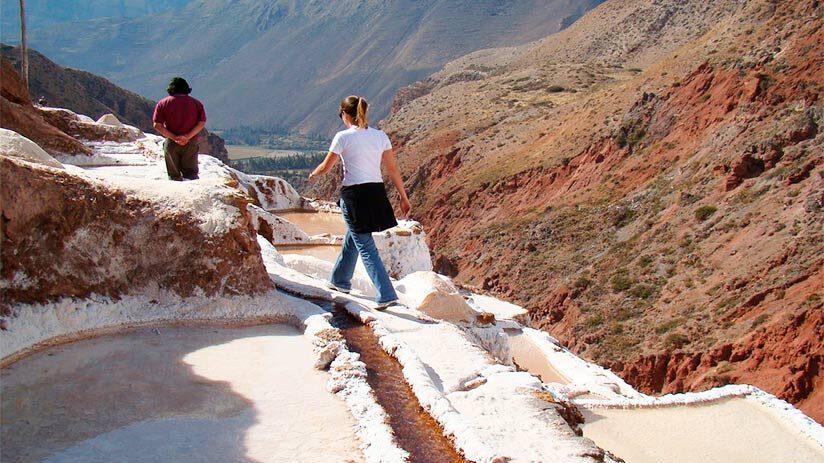
As for the schedule:
- The Maras Salt Mines are available from 8 AM to 5 PM every day. So if you want to avoid large crowds, they can approach during opening hours. Also, most groups don't start accumulating until 9 or 10 AM. Although if what you are looking for is the perfect photograph, then the afternoon may be the best time to visit it. It is when the light is most balanced, making it one of the best times to take photos. Of course, all this during the Dry season.
- But the truth is, no matter what time you go, you will have an intriguing experience. In addition, you can always find quiet places away from the crowd. Regarding the prices, the unique price of a ticket for national and foreign people is S/10.
"OH, THE THINGS YOU CAN FIND IF YOU DON'T STAY BEHIND"
As you can see, the Salinas de Maras is a unique place within the culture of Cusco and its surroundings, it is a part that is still very much alive and its traditions are maintained by the local communities. To be able to visit this beautiful destination is to know a living part of the history of the Ancient Inca Empire. That is why we hope together with Machu Travel Peru to have illuminated your perspective of this often forgotten place. You can consult with our expert and qualified advisors to know how to explore this and many other attractions within Peru.
Source: https://www.machutravelperu.com/blog/maras-salt-mines
0 Response to "Creek Feeding Salinas De Maras Peru"
Postar um comentário